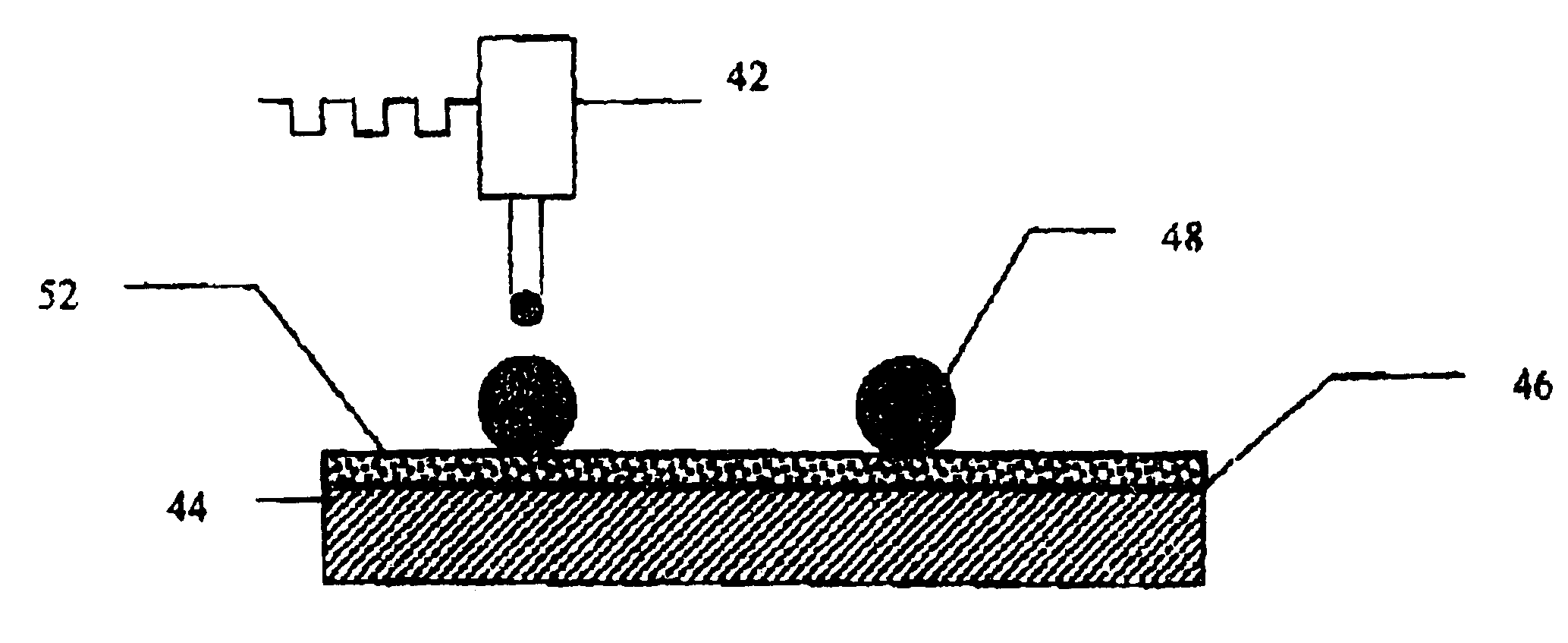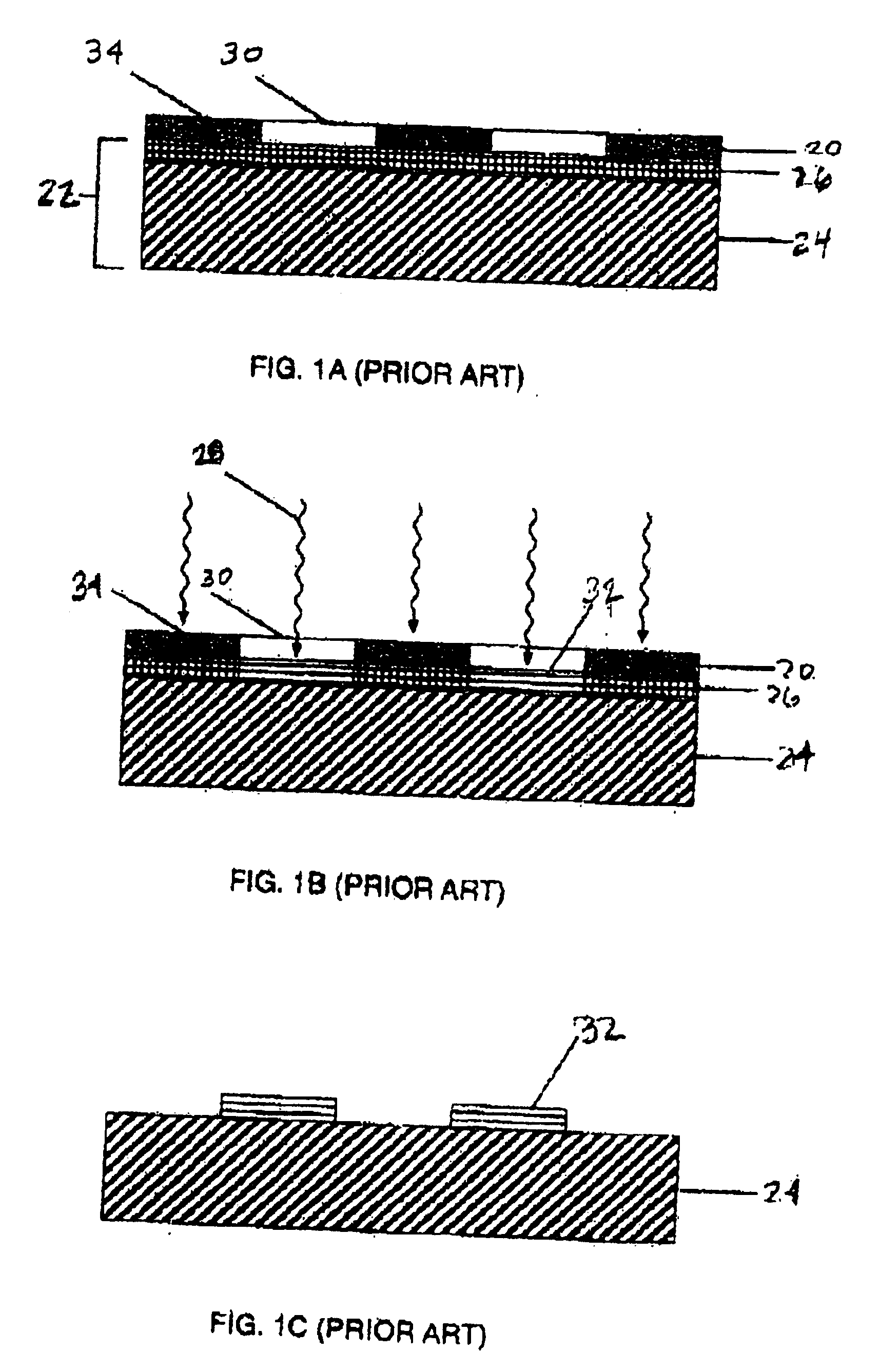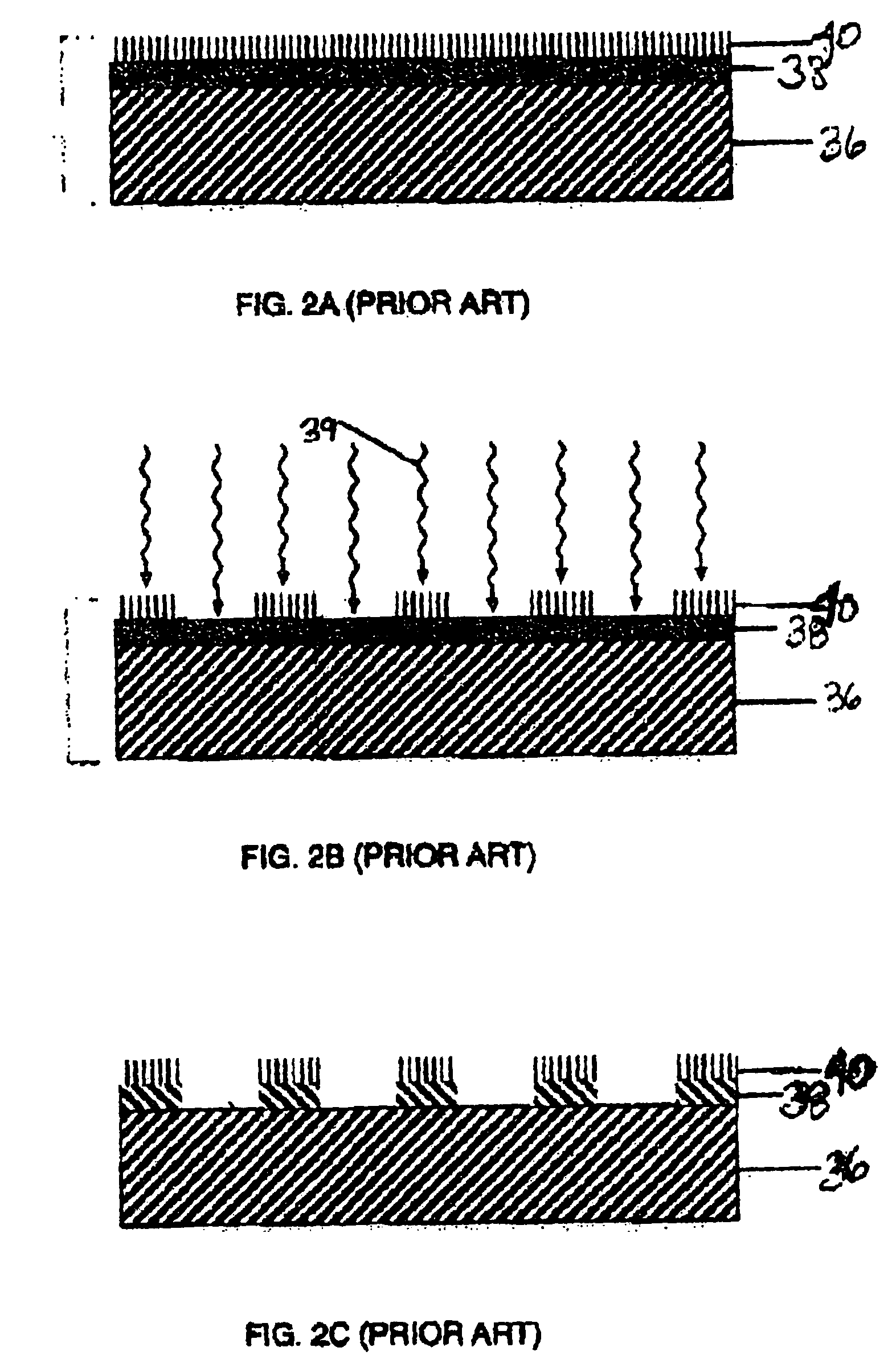Pre-treatment liquid for use in preparation of an offset printing plate using direct inkjet CTP
a technology of offset printing and liquid treatment, which is applied in the direction of liquid soap, duplicating/marking methods, printing processes, etc., can solve the problems of high production cost, unstable, messy and environmentally harmful films, etc., and achieve stable ink dots, improve image quality, and improve the effect of plate preparation speed
- Summary
- Abstract
- Description
- Claims
- Application Information
AI Technical Summary
Benefits of technology
Problems solved by technology
Method used
Image
Examples
example 1
[0054]An offset plate was coated using a rubbing motion with a coating solution consisting of 5% butyl carbitol, 3% N-methyl pyrrolidone, 92% deionized water and phosphoric acid, which was added to provide a pH between 1 to 2, and dried at 50° C. for 30 sec. The plate was then placed on an XY bed where it was imaged, in 600 dpi resolution, (using the inkjet print head described in EP640481 filled with CTP liquid described in Israeli patent application no. 132789) to produce a very sharp 600 dpi quality image by single pass of the head, with no clustering phenomenon. The plate was then coated with acidified gum arabic.
example 2
[0055]An offset plate was coated using a rubbing motion with a coating solution consisting of 13% Zinc acetate, 3% Calcium chloride, 5% Propyl acetate, 5% Butyl carbitol, 40% ethanol, 34% deionized water, and dried at 50° C. for 30 sec. The plate was then placed on an XY bed where it was imaged, in 600 dpi resolution, (using the inkjet print head described in EP640481 filled with CTP liquid described in Israeli patent application no. 132789) to produce a very sharp 600 dpi quality image by single pass of the head, with no clustering phenomenon. The plate was then coated with acidified gum arabic.
example 3
[0056]An offset plate was coated using a rubbing motion with a coating solution consisting of 13% Zinc acetate, 3% Calcium chloride, 5% Butyl lactate, 5% Butyl carbitol, 32% Ethanol and 42% of deionized water, and dried at 50° C. for 30 sec. The plate was then placed on an XY bed where it was imaged, Dpi 600 dpi resolution, (using the inkjet print head described in EP640481 filled with CTP liquid described in Israeli patent application no. 132789) to produce a very sharp 600 dpi quality image by single pass of the head, with no clustering phenomenon. The plate was then coated with acidified gum arabic.
PUM
| Property | Measurement | Unit |
|---|---|---|
| Length | aaaaa | aaaaa |
| Fraction | aaaaa | aaaaa |
| Fraction | aaaaa | aaaaa |
Abstract
Description
Claims
Application Information
 Login to View More
Login to View More - R&D
- Intellectual Property
- Life Sciences
- Materials
- Tech Scout
- Unparalleled Data Quality
- Higher Quality Content
- 60% Fewer Hallucinations
Browse by: Latest US Patents, China's latest patents, Technical Efficacy Thesaurus, Application Domain, Technology Topic, Popular Technical Reports.
© 2025 PatSnap. All rights reserved.Legal|Privacy policy|Modern Slavery Act Transparency Statement|Sitemap|About US| Contact US: help@patsnap.com



